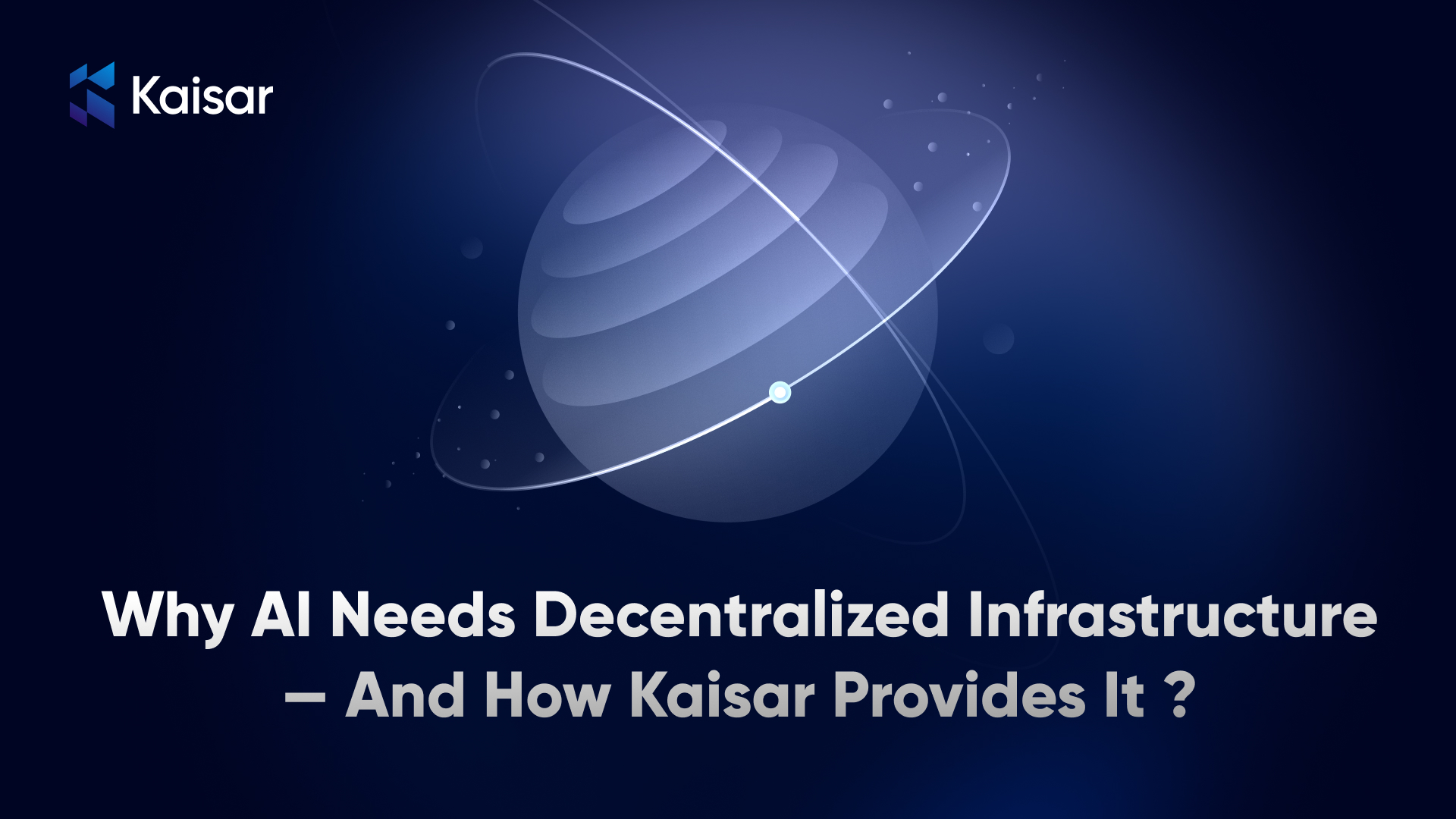Artificial Intelligence (AI) has revolutionised the way we work, interact , shop, create, and even think! However, in the background, AI is rapidly developing on a deep layer of infrastructure that is becoming increasingly stressed by decision-making centralized databases, inefficiencies, and ethical concerns.
In this article we will discuss how Kaisar is coming to forefront as a viable solution to address some core issues with centralized AI by presenting a decentralized, scalable, community-governed, infrastructure.
The Problem with Centralized AI Infrastructure
Today’s AI models, particularly large language models (LLMs) like ChatGPT, generative adversarial networks (GANs), and neural networks, rely heavily on computational resources —processing power, energy, and storage.
To scale and meet those needs, the industry concentrated these resources in a small number of massive data centres that are owned by a handful of tech companies which has its positives and negatives:
Access
Only the world’s largest and best resourced corporations can afford to train and run their powerful AI models. Startups, researchers, and independent developers often get priced out of AI with high GPU rental fees and tremendous costs of ownership cloud infrastructure
Single Points of Failure
Centralization creates organizations deeply vulnerable to cyberattacks and
outages.Censorship happens more dynamically when entire AI pipeline is linked to a single entity. If any attacker successfully manipulates one policy in a centralized AI database, it could bring all the public and private processes to a crashing halt.
Non-Transparency
When a centralized organization manages the entire infrastructure, there is non- accountability and, more importantly, opacity in the operations behind the AI models. There are questionable things happening deep inside related to factors such as how data is processed; how models are trained; how outputs are computed.
This can create forms of bias, manipulation, and enough distrust in customers that makes it quite difficult to even belief in their framework.
Why AI Needs Kaisar DePIN
Kaisar is a Decentralized Physical Infrastructure Network (DePIN) project that is very different in terms of computing. By removing centralized data centres for calculation, decentralized infrastructure uses resources from different resources around the globe—i.e., individual GPUs, idle servers, edge devices, and links them into broader networks. The benefits of Kaisar network for AI are as follows:
Decentralized GPU Network
Kaisar is using the GPU power of million users around the world. Whether a personal gaming PC with a powerful NVIDIA RTX card or an enterprise with excess capacity, all of the computer nodes are recognized, registered, and combined into a single one coherent and high throughput computing network. This model has enormous cost-savings to developers while maximizing hardware utilization to owners.
AI-Centric Optimizations
Kaisar is unique and suited for AI. It supports commonly used AI frameworks such as PyTorch and TensorFlow out of the box, has preconfigured environments, and has APIs that fully integrate into AI training pipelines, allowing for very little friction to set up and extract maximum performance for AI workflows.
Transparent Smart Contracts
Payment, job allocation, and performance metrics are noted on Kaisar’s PEAQ blockchain layer governed by transparent smart contracts. Contributors can be fairly paid for real compute and uptime. This encourages trust and fair engagement and payment.
Data Privacy and Security
With blockchain encryption Kaisar can guarantee that sensitive data will be processed in a secure manner, even when processed across untrusted nodes. This is important when considering sensitive data and applications involves medical, financial transactions, and proprietary algorithmic data.
Community-Owned Protocol
Kaisar is not managed by a central entity. It has a DAO (Decentralized Autonomous Organization) structure, which allows holders of Kaisar gain governance rights in voting on some important decisions of the protocol (e.g., software upgrades, changes to economic modeling, etc) and long-term alignment of community interests by enabling community engagement and governance.
Energy-efficient
Kaisar maximizes energy density by using already-existing hardware while optimizing job placement and distribution. Kaisar minimizes the marginal energy cost of any AI task by ensuring that more people and data can share same compute resources for producing new AI models and applications. Rather than generating more massive AI infrastructure, it is repurposing existing infrastructure and doing the processes more energy efficiently.
Conclusion
As we continue incorporating AI into our daily lives, the infrastructure needs to power, supply, and support that technology will increase. A centralized, closed, and expensive infrastructure model cannot be the only solution to the increased demands.
Kaisar’s decentralized infrastructure is not just another means for delivery of technology change, it is a shift in how we think about AI infrastructure needs to be . Kaisar projects a clearly imagined future where AI is reasonable, usable, and accessible.
Join Kaisar Network
Ready to scale your AI projects with affordable GPU resources? Join Kaisar Network today and harness the power of DePIN. Visit kaisar.io to get started

